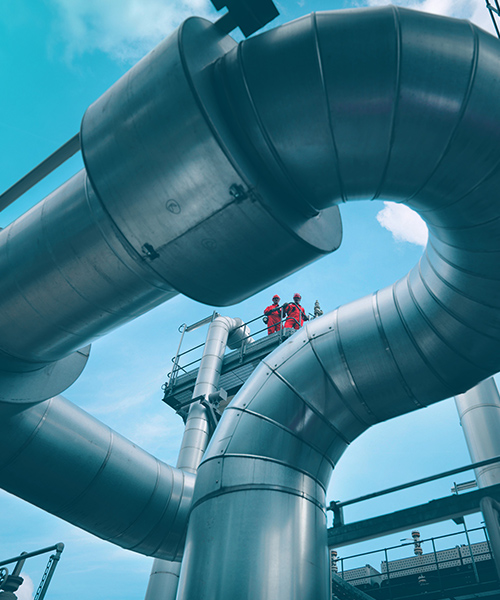July 01, 2023 • 4 min read
How are US carbon tax credits making carbon capture projects more viable?
Recent shifts in policy and regulations in the US are sparking renewed interest in carbon capture, utilization, and storage (CCUS).
“CCUS is a critical tool to address climate change,” says Adam Green, Policy and Regulatory Consultant. “But until recently, projects and technologies haven’t been financially competitive enough to succeed in most regions.
“This is finally changing,” continues Green. “We’re seeing much more frequent project updates, technology developments, and funding announcements in heavy industries. CCUS is higher on the agenda than it has been for years, particularly in energy intensive sectors that need immediate decarbonization solutions.”
How are these policy changes impacting the viability of CCUS projects across North America, Europe, and the Asia-Pacific region?
The US is leading the way in CCUS policymaking
Much of this recent increase in activity is thanks to President Biden’s Inflation Reduction Act (IRA) in the US. This boosts the 45Q Tax Credit from USD$50 to $85 per ton of CO2 sequestered.
“The goal of this tax credit is to incentivize gas-fired power plants, cement, steel, hydrogen, and petrochemicals facilities to retrofit or incorporate CCUS into their facilities,” says Green.
The IRA also lowers the carbon emissions threshold that facilities must meet to qualify. This means more projects could become viable. For power generation, the capture threshold for credit-eligible facilities will fall from 500,000 tons per year of CO2 emitted to 18,750 tons per year.
As Green explains, the option for direct payment means that more participants can benefit from CCUS, rather than just those with high cash tax liabilities.
“These changes create more certainty for investors, which will unlock more investment options and stimulate the market in a way that tax liability limited credits do not. A study by the Bipartisan Policy Center found that ‘one dollar in cash has nearly double the value of a dollar in tax credits to a project developer’,” says Green.
More certainty equals more attractiveness
Previously interrupted and delayed projects across the US have cast doubt over the viability of CCUS technologies. However, the changes instigated by the IRA help address this uncertainty.
“This is welcome news for investors who had previously invested hundreds of thousands of dollars in feasibility studies, development plans and community engagement, only to fail to meet the criteria for government funding or lose in the competitive application process,” says Green.
“CCUS projects that didn’t have a future before, are back on the agenda.”
The investor attractiveness of the revised 45Q Tax Credit in the US has not been lost on the governments of international CCUS hotspots such as Canada, the UK, the European Union, and Australia.
Other governments are concerned about the extent to which the IRA will redirect CCUS investment from their jurisdictions. Green outlines their various responses.
“Canada’s 2023 budget expanded the investment tax credits available for CCUS and hydrogen production. This also includes technology projects designed to stimulate investment to support the country’s energy transition.
“The European Union’s Green Deal Industrial Plan and its Net Zero Industry Act (NZIA) also look to address Europe’s main bottlenecks to a successful CCUS industry. And this should spark greater interest in CCUS projects and technologies across the Atlantic, too.”
However, government incentives alone won’t guarantee the success of projects.
Carbon intensive clusters require collaboration
Early on, the UK found that approaching the deployment of CCUS through industrial clusters – which allow several businesses to share carbon transport and storage infrastructure – can maximize economies of scale and reduce the total investment required.
The cluster approach therefore helps to drive down the unit cost of CCUS projects. And it also supports smaller emitters to decarbonize and create new products and services using carbon.
“While the US already has several of its own clusters in the making, the expansion of the 45Q credit program could support many more industrial clusters to follow in these footsteps,” says Green.
“A collaborative and integrated approach will be key to bringing neighbouring industries together. This unlocks the synergies of sharing infrastructure for transport and storage.”
An example of this level of collaboration is the Humber Zero project in the UK. This initiative brings multiple facility owners together to reduce the CO2 footprint of their operations through CCUS.
“These projects are technically challenging, so sharing learnings and expertise to overcome these challenges is critical,” Green explains.
“We’re working on CCUS projects on two neighbouring facilities in the Humber region, which will use the same CCUS technology and share infrastructure to transport the CO2 for safe storage.
“Our teams are sharing their insights on the technology and lessons learned, to help identify possible issues in these projects before they arise. This knowledge share involves other related projects in the US and other geographies, too.
“These collaborations support CCUS first movers to achieve their decarbonization goals,” continues Green. “And they also accelerate the speed of technological innovation to market. This is welcome news for heavy industrial operators committed to decarbonization.”
Making CCUS fit for the future
The US tax credit will not directly impact every company exploring CCUS. But it will help to prove the commercial viability of the technology and increase the confidence of developers and investors.
“One of the key challenges to overcome with CCUS is its reputation,” says Green. “But the more projects that proceed, the greater positive awareness and interest we’ll see in CCUS technologies. And this should encourage other regional jurisdictions to explore the role that incentives can play in making projects viable.”
Green sees a pathway to a scale for the CCUS industry. But not necessarily the same pathway as other energy transition technologies like solar and wind energy.
“Each CCUS project is slightly different, but there are still common technologies and learnings that are going to help other projects succeed. And over time, we’ll see areas of scalability around technology and project delivery.
“For many carbon intensive industries, CCUS is one of the only viable decarbonization options available today,” continues Green. “And as its momentum builds on the back of new regulations and collaborations in key regions, more CCUS projects will become viable all over the world.”



